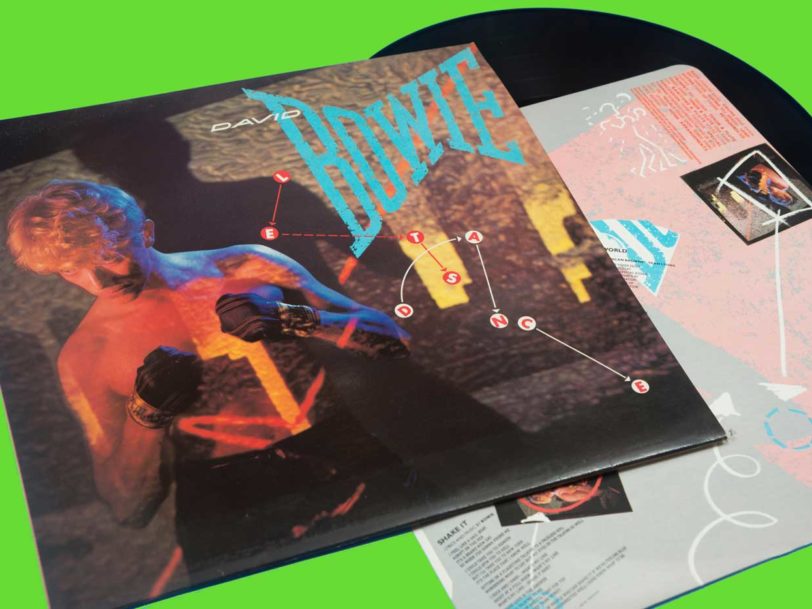Following the recording sessions for 1980’s art-rock landmark, Scary Monsters (And Super Creeps), David Bowie entered a period of artistic exploration away from the glare of pop stardom. Pursuing his interest in acting, he starred in the Broadway play The Elephant Man from July 1980 to January 1981, and played himself in the German film Christiane F, for which he also provided the soundtrack. He’d intended to promote Scary Monsters, which had been released in September 1980, with a tour, but the murder of John Lennon, his close friend and collaborator, that December affected Bowie a great deal. But though he stepped away from the limelight, retreating to his home in Switzerland in January 1981, Bowie continued to work, finding his way towards the new sound he would unveil on his 15th album, Let’s Dance.
Listen to ‘Let’s Dance’ here.
Scoring an enormous hit with his Queen collaboration, Under Pressure, released in October 1981, and recoding with electronic music pioneer Giorgio Moroder for the title track of the 1982 film Cat People, Bowie kept his hand in on the charts with a new, mainstream-minded approach to his music. Meanwhile, he continued to build his acting résumé. Taking the lead role in a BBC adaptation of Bertolt Brecht’s play Baal resulted in an accompanying soundtrack EP, while parts in the movies The Hunger and Merry Christmas, Mr Lawrence saw him play a vampire and a prisoner of war, respectively. All the while, his musical stock was as high as ever – the leading lights of the New Romantic and post-punk movements owed a huge debt to Bowie, both in terms of sound and style, and with the gaps between albums growing, his next record was hugely anticipated.
“I’d been mandated to make hits”
Typically, Bowie looked to shake things up again, choosing to work with one of the hottest hitmakers of the day, Chic’s Nile Rodgers, after a chance meeting at Continental, an after-hours bar in Manhattan. “We wound up talking all night about all sorts of music,” Rodgers recounted in his 2011 autobiography, Le Freak. “I don’t remember anyone ever bothering us; we were like old friends sitting on a couch in someone’s living room. The wide-ranging, reference-heavy, autodidactic rap made me feel like I was back in the mix of the beatniks, hippies, and jazzers of my youth. At some point I must have given him my phone number, but I don’t remember doing so.”
Bowie contacted Rodgers to arrange a meeting in New York City, and the two musicians quickly bonded over a shared love of jazz and museum visits. In a 2016 interview with Rolling Stone, Rodgers remembered the moment Bowie felt he’d found the aesthetic of the new record: “He came to my apartment one day and he had a picture of Little Richard in a red suit getting into a red Cadillac. And he said to me, ‘Nile, darling, the record should sound like this!’ And he showed me the picture. And I knew exactly – think of how crazy this was – what he meant. He didn’t mean he wanted his record to sound like a Little Richard record. He said, ‘This visual thing is what we want to achieve aurally in every sense of the word.’ Even though the picture was obviously from the 50s or the early 60s, it looked modern. The Cadillac looked like a spaceship, and Little Richard was in this monochromatic outfit which then later on became David Bowie in the yellow monochromatic outfit with the yellow hair.”
Rodgers may as well have been describing the dancefloor-filling song that would become the new album’s title track – a thrilling, souped-up update on classic 50s rock’n’roll.




